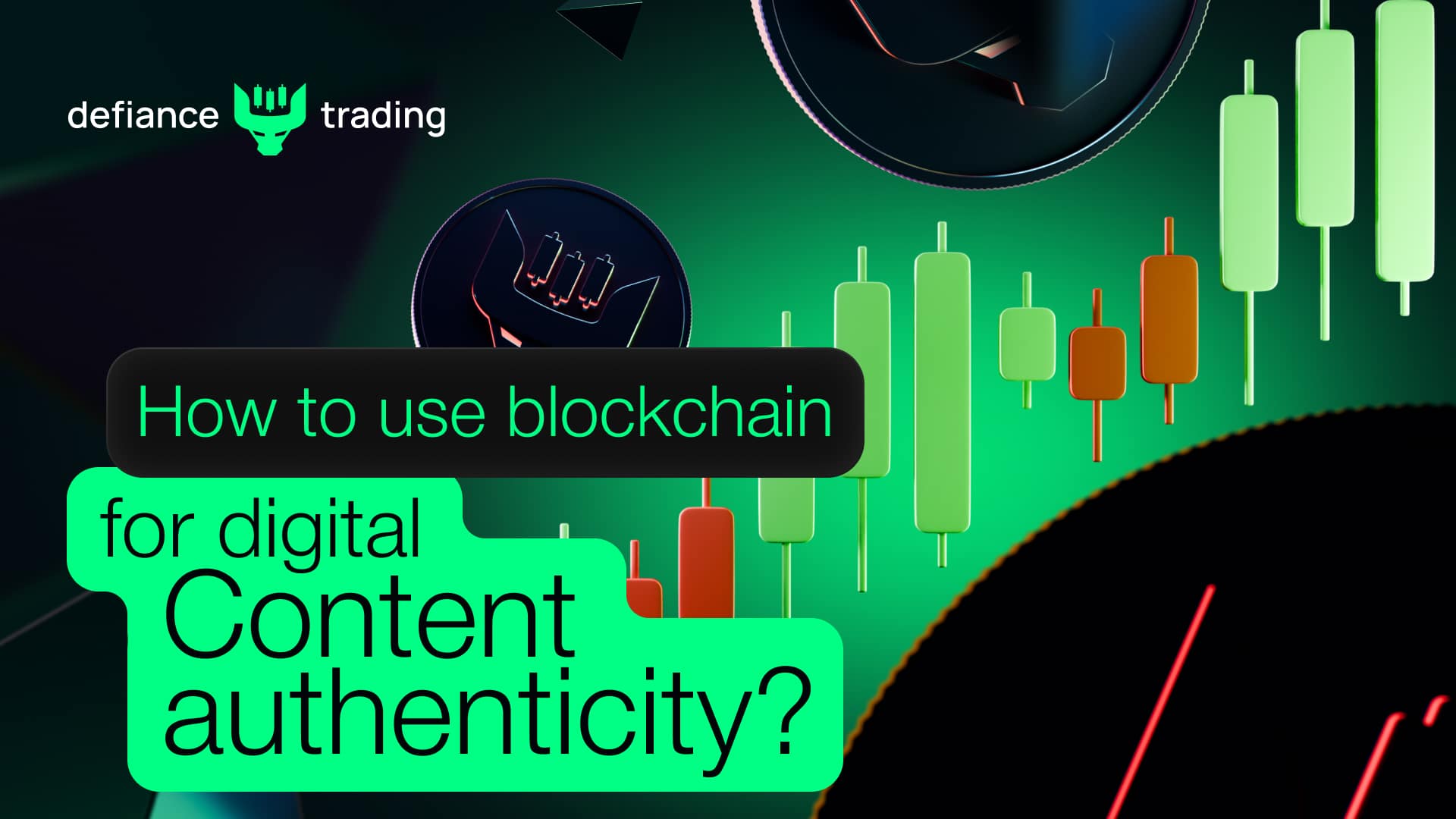How to use blockchain for digital content authenticity?

At a time when AI-generated content is taking up space, the need to confirm the authenticity of media like images, videos, and music has never been greater. Deep fakes can easily pass for originals, so what is the gold standard to say what is true and what is not? This is where bringing blockchain for digital content authenticity comes in.
The inability to distinguish originals from fakes has far-reaching effects. Implications include the spread of misinformation and smear campaigns, which can incite violence and societal unrest. Also, value flows away from those who deserve credit. How do we preserve peace in our society and reward actual creators?
In this article, we will explore blockchain features, how they help to circulate original content exclusively, the benefits of cryptography in content distribution, key players in content flow on the blockchain, and present use cases.
Let’s dive in!
Understanding the Blockchain.
For years, we have known the internet as a global village where people from corners of the earth can communicate like distance is nothing. There is so much information to explore. You can find almost anything, but your details aren’t safe.
By signing the Terms and Conditions or accepting cookies, you are giving entities access to your privacy. They can share with the highest bidder. For instance, in 2018, Facebook and Mark Zuckerberg faced the House committee for selling voters’ information to contesting parties, granting an unfair advantage in the elections.
With the blockchain, the data points are uploaded across various computers to keep them secure, transparent, and immune to tampering. The ability of blockchain data to remain unchanged is immutability. Once recorded, this data can’t be changed or deleted due to cryptographic hashes. Hashes link subsequent blocks to form a chain. An attempt to alter any block in the sequence will require another calculation of previous hashes, an action impractical for even machines of our age.
On top of this, you can catch every move on the blockchain. Transparency makes network participants develop trust, which translates into increased network time and traffic.
How exactly does the blockchain maintain security?
In the early years of the blockchain, Proof of Work (PoW) took center stage. Those who partake in POW are miners who invest loads of computational power to solve complex mathematical puzzles. The process starts with the miners gathering unsorted transactions into a block. They’d use high computational power to compete to sort the transactions and earn an incentive.
Today, Proof of Stake (PoS) allows users to put funds into ensuring network security. It takes less computational investment and allows more users to participate.
The role of the blockchain for content authenticity
Imagine a world where content creators have unabated rights to their intellectual property. If an artist has enormous time on the airwaves, you’d assume he is smiling at the bank. Sadly, this is not the case. Creators get only a meager fraction of revenue whenever their works get attention. As low as 20% on some digital platforms. A huge chunk goes to the platform. This condition remains the status quo despite the billions of music, art, and content in circulation.
The role of blockchain for digital content authenticity includes;
No more intermediaries
Monetizing your content brings limitations. Suddenly, creators can not simply communicate with their audience and take home their earnings.
Platforms have to be platforms and collect their checks, leaving the real grinders with peanuts. With fresh innovation on the blockchain, creators maintain control over their content and receive payments directly.
Pay-per-use experience
You must have used a streaming platform at a time. It works on a subscription basis. No one watches Netflix all day. So, is there value for your money?
The pay-per-use format on the blockchain allows users to spend on what they consume. It will enable consumers to curate a unique mix of films and shows to enjoy the viewing experience.
Secure transactions
The blockchain makes everything visible but limits access. You can see all the NFTs ever made, but you don’t own one without fulfilling the underlying smart contract.
Cryptography and decentralization disarm bad actors and ensure seamless transactions between creators and end users.
Consumers pay for genuine products, while creators smile at the bank for their ideas and nurture them.
When users have confidence in content authenticity, the platform attracts more traffic and racks up more transactions.
Key plays in blockchain content distribution
To make the content flow on the blockchain a massive success, there are three players along the way. Starting from the top;
- Content creators: These people are the think tanks. There’s no content without them. Creators leverage the blockchain immutability and transparency to carve out autonomy, manage distribution, and enjoy the value of their work.
Once they upload pieces to a decentralized platform, it stamps such content with ownership and ensures fair compensation. Creators can earn through new remuneration methods like pay-per-use and micropayments. - Content Contributors: The sky is big enough for everyone to fly, and when a creator comes up with an idea, others can pitch contributions. To add quality, contributors get special mentions or a share of revenue. The blockchain duly records their additions to the project and ensures fair compensation. Considering Contributors in blockchain distribution prevents usual collaborative disputes over revenue split and allows content creation to flow seamlessly.
- Content consumers: This crowd is the target audience. These fun seekers generate interest in the content and determine its value. With the blockchain, end users can enjoy a variety of content without intermediaries and cut out costs with direct interaction with creators. This setting allows a wholesome experience, void of hidden charges and security leaks.
Practical applications of blockchain for digital content authenticity
Today, blockchain companies involved in digital content authenticity include;
- LaMint: Lamint says high subscription fees with rigid payment models have no place in content distribution. This interface encourages micropayments and assists creators in making instant money. They shouldn’t have to depend on multiple ads in their videos, which can impede viewers’ attention. Users can enjoy content on demand using flexible payment options.
- Flixxo: Flixxo is a decentralized content distribution platform that helps content creators deliver to special consumers who pay for it. Users pay directly to the creator to enjoy short, independent films. Flixxo exists as a self-sustaining ecosystem, and it is up to creators to continually keep their audiences captivated.
- Twetch: Twetch is a decentralized social media platform that ensures privacy, free expression, and monetization. It differs from traditional platforms and gives creators control over data, presence, and content. Twetch incentivizes all users to create more content and keep their audiences engaged.
Conclusion
Creators are yet to maximize the earning potential of their works because of copyright infringements, the heavy hand of content share platforms, and data leaks. Using blockchain for digital content authenticity brings in qualities like immutability, decentralization, and a transparent ledger which makes stealing from others easy to trace and perpetrators easy to persecute.
With cryptography, content seekers can enjoy what they pay for, creators find motivation to do more, and there are no middlemen. To make this fresh dimension a success, three groups work in synergy: content creators, contributors, and consumers.
For more updates, visit our WEBSITE today!
Ready to Defy the Odds?
Become part of a growing movement
